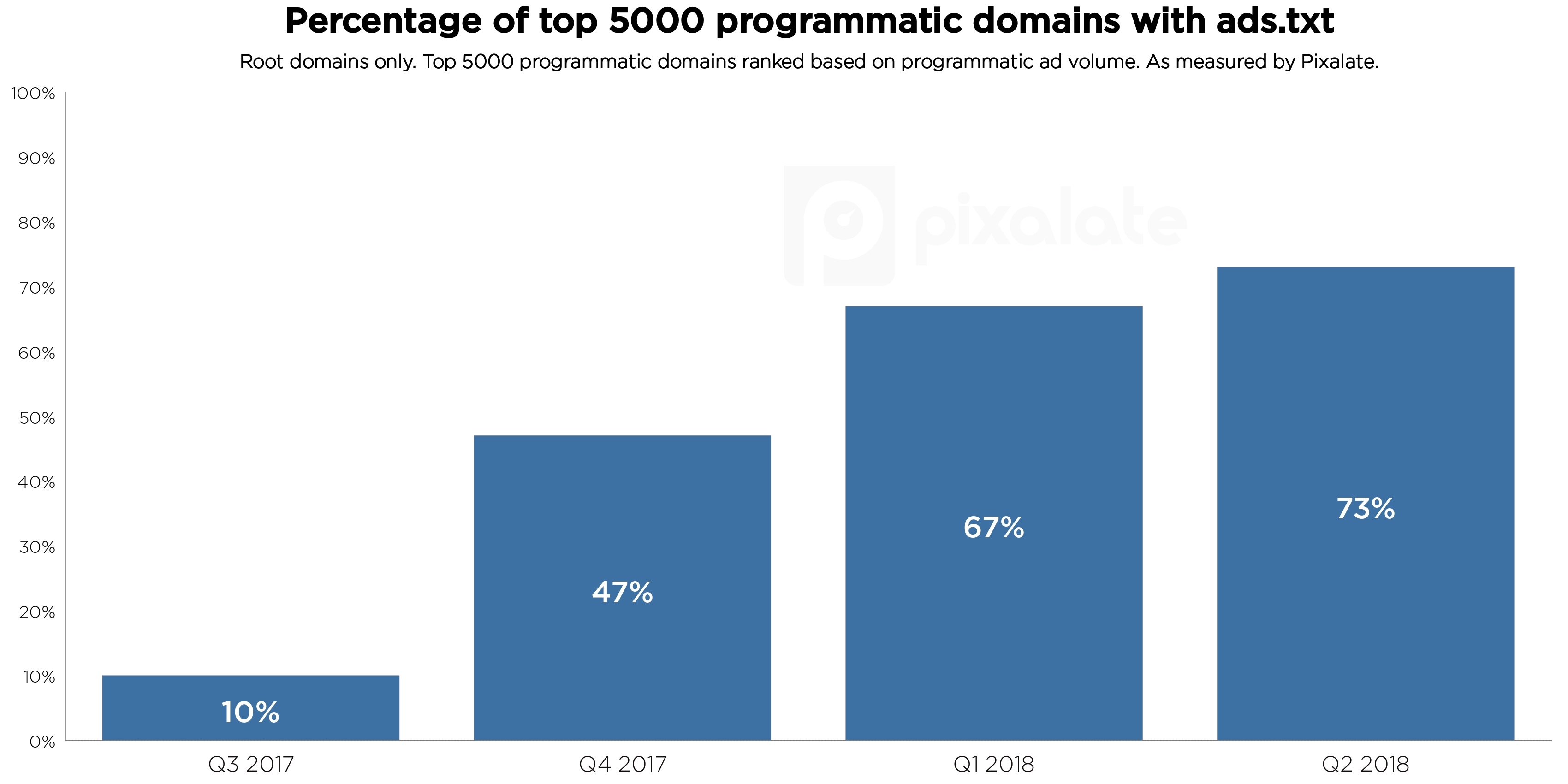
Ads.txt adoption increased 5.4x over the first half of 2018, rising from about 90,000 domains to about 500,000 domains. The IAB’s ads.txt program aims to reduce “domain spoofing," a problematic — and costly — type of ad fraud in which the source of an ad impression is misrepresented in order to make the inventory appear more valuable.
Widespread adoption of ads.txt has a positive overall impact in the industry’s ongoing battle against ad fraud. Pixalate’s latest data reveals that sites with ads.txt typically have lower ad fraud rates than sites without ads.txt — although it’s not a solution to all types of ad fraud.
Pixalate has tracked the growth of ads.txt in the programmatic marketplace for over a year, and our Q2 2018 Ads.txt Trends Report brings you the latest updates on the state of adoption.
(Click here to download the full Q2 2018 Ads.txt Trends Report)
The total number of domains with ads.txt rose from about 90,000 at the start of 2018 to about 500,000 by the end of Q2 2018, representing an increase of 5.4x.
Below are quarter-over-quarter increases in adoption rate:
Now that three-fourths of the world’s leading programmatic publishers support ads.txt, it’s possible for some buyers to go “ads.txt-only” with their campaigns.
According to Digiday, Dentsu Aegis Network’s 360i has enabled ads.txt-only buying across all of its clients after conducting a test which found that doing so had minimal impact on reach and price. Google has also made available the option for ads.txt-only buying.
You can download the full list of domains with ads.txt here. This list is updated monthly.
You can also download our Q2 2018 Ads.txt Trends Report for a comprehensive update on the state of ads.txt adoption.
Want more data-driven insights? Sign up for our blog!
*By entering your email address and clicking Subscribe, you are agreeing to our Terms of Use and Privacy Policy.
These Stories on Research Reports
*By entering your email address and clicking Subscribe, you are agreeing to our Terms of Use and Privacy Policy.

Disclaimer: The content of this page reflects Pixalate’s opinions with respect to the factors that Pixalate believes can be useful to the digital media industry. Any proprietary data shared is grounded in Pixalate’s proprietary technology and analytics, which Pixalate is continuously evaluating and updating. Any references to outside sources should not be construed as endorsements. Pixalate’s opinions are just that - opinion, not facts or guarantees.
Per the MRC, “'Fraud' is not intended to represent fraud as defined in various laws, statutes and ordinances or as conventionally used in U.S. Court or other legal proceedings, but rather a custom definition strictly for advertising measurement purposes. Also per the MRC, “‘Invalid Traffic’ is defined generally as traffic that does not meet certain ad serving quality or completeness criteria, or otherwise does not represent legitimate ad traffic that should be included in measurement counts. Among the reasons why ad traffic may be deemed invalid is it is a result of non-human traffic (spiders, bots, etc.), or activity designed to produce fraudulent traffic.”

